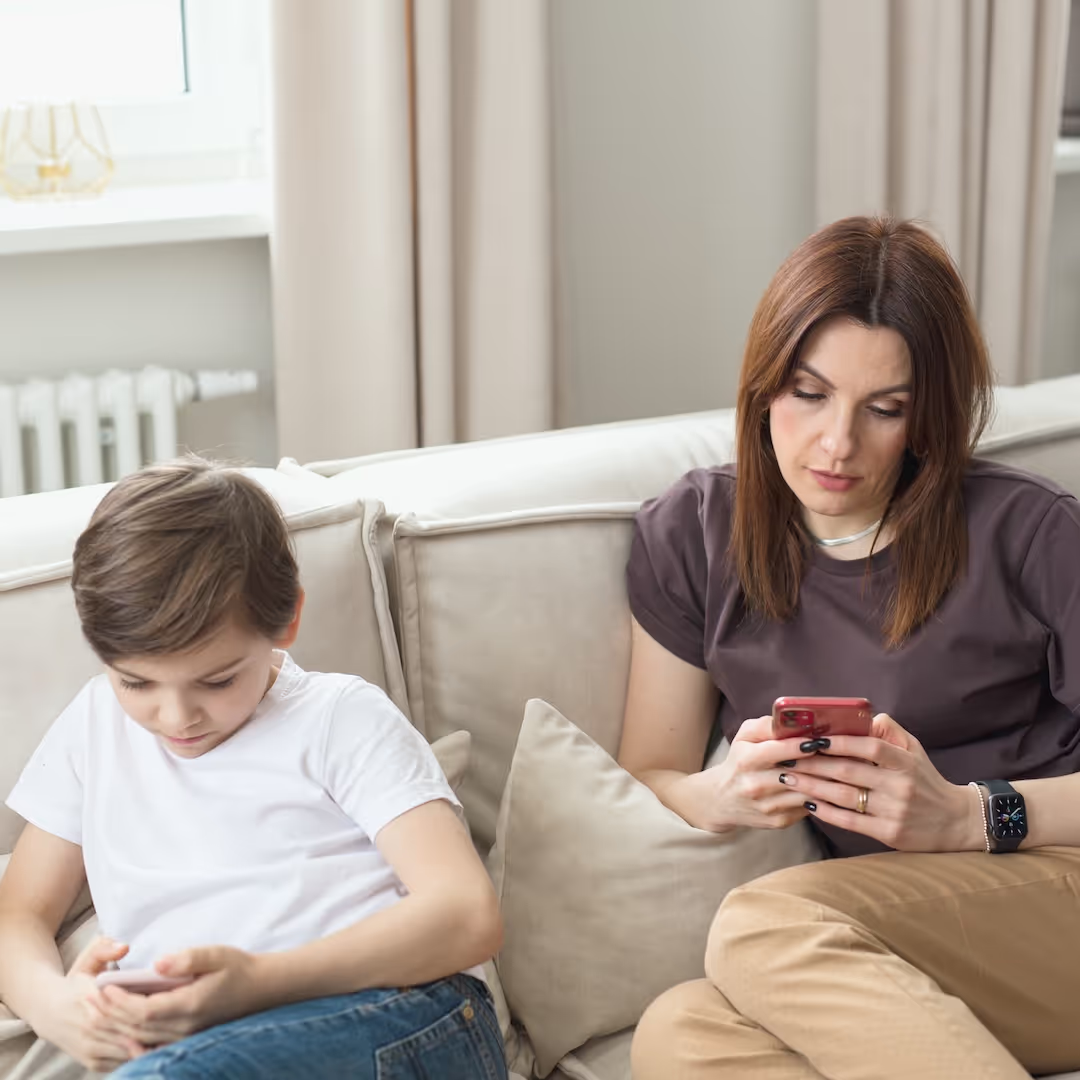



Recently I received this email from a mom named Michelle:
“I am a parent of two teenage daughters (16 and 14), both in high school. I am frustrated with how the schools encourage social media usage by using it for communication. The softball team communicates through Twitter. Clubs communicate through Instagram. The band uses Snapchat. How do we best encourage (request/demand) the schools to use non-social media platforms for activities, sports, and clubs?... Any advice?”
I started emailing with Michelle, and later she wrote this to me:
“I heard from a mom today that her 7th grader has to use Twitter for cross country. I'm not sure he's even 13 yet!”
I was so appreciative to get her emails, and I am extremely disturbed by all this. Kids and teens should not be expected to be on social media platforms as the primary way of communicating regarding sports, activities, etc. I wanted to get a greater feel of what educators and other parents are seeing happening, and so we posted on the Screenagers Facebook page the following question:
“Are your kids asked to communicate with their class, after-school clubs, sports, etc., on social media like Snapchat, Twitch, WhatsApp, Discord, or others? What are your thoughts on this? What platforms do they use for this communication?”
Many people responded with things they are seeing that they don’t like, as well as what they are okay with.
I realize this is complicated terrain. For example, some teams do not officially use a social media platform to communicate, but the students create their own groups.
Today I want to share some of the responses we received from the Facebook post and offer discussion questions to involve your youth in this important topic. What do they see happening? What concerns them, and what solutions do they have?
We, here at Screenagers, would love to hear from you. We are working on a new Screenagers Podcast episode about this topic. Email us any thoughts you have on this topic — including if you have seen anyone advocate for change.
Learn more about showing our movies in your school or community!
Join Screenagers filmmaker Delaney Ruston MD for our latest Podcast

Learn more about our Screen-Free Sleep campaign at the website!
Our movie made for parents and educators of younger kids
Learn more about showing our movies in your school or community!
My kid's high school has a school-wide Discord server that they use for notifications. They also use it for personal communications. My teen loves it — she found a lot of friends through their Neurodiversity channel. — K.Z.
It was unofficial, but Discord was a lifesaver last year for my son’s 7th-grade class. He was the moderator, but all the kids except 1 were in it, and some, but not all, of the teachers. It was his only SM (except YouTube), but I really saw the value for communication. — E.M.
Schoology is definitely effective because there are groups set up for ALL classes, clubs, plays, class years, school wide administration....and it is required and on School iPad. FB can work but coaches that use it rely far more on long announcements at the end of practice so a lot is missing on FB and info is not reliably listened too by students/relayed by students to parents.The group chat by my daughter's sports team works great BUT, that is likely because of the maturity, kindness, inclusion displayed by these particular upper-class women who set the standards for the Freshmen. — H.M.
My kids use MS teams for official communication during school hours as well as for after school clubs. However I know Instagram is informally used for their swim team, maybe other sports teams as well. I have a 12-year old who doesn’t have a phone or social media, so basically, he has no idea what’s going on if anything important is posted on Instagram. And I also have a 15-year old who has a phone and uses Instagram minimally. I personally feel that when the school feels so strongly about use of social media at such an impressionable age, why do they encourage it’s use for communication among coaches and students for after-school sports? Just don’t get it. Especially when parents are not on those groups — P.V.
My kids had to get Snapchat for high school soccer communication. In past years they needed Instagram for sports communication. I go along but don’t agree with it. — K.H.
Formal communication for sports and teams is done with Remind. Informal, between the players/kids is all on Snapchat. I like Remind because the parents are on it too. Snapchat is much more difficult for a parent to see what's going on. I don't like Snapchat at all but also feel that if I take it away, it will limit his ability to communicate and be included with friends. — T.L.
Remind for school, GroupMe for travel...those are the formal channels. Each team he’s had has had a player-initiated Snapchat group. We’ve been on both sides of this because we didn’t allow Snapchat until high school, so there were team chat groups he was left out of. One of his teams also has a group text thread. I don’t think the content differs — at least with his teams — whether it’s text or an app like Snapchat, it’s just more frequent/often with an app. — K.D.
TeamSnap, Shutterfly for groups, Band for the parents. One of my kids uses Huddl, both use Google classroom as well. At the high school level, there is definitely more communication directly with the kids and less with the parents. Coaches usually email the parents for the smaller teams. — D.P.
My school teams use Remind. Outside of school they use TeamSnap. Both are good and can be used on phones. — K.D.
Learn more about showing our movies in your school or community!
Join Screenagers filmmaker Delaney Ruston MD for our latest Podcast

Learn more about our Screen-Free Sleep campaign at the website!
Our movie made for parents and educators of younger kids
Join Screenagers filmmaker Delaney Ruston MD for our latest Podcast
Our school is only allowed to use Remind for communication. — A.P.
Remind, GroupMe & TeamSnap have been used by various teams & activities of my kids. — K.T.
Our school has used an app-not these. It really isn’t appropriate for a teacher/coach to be contacting students via personal text/emails. Not just to protect children, to protect the adults. I’d be bothered if they were using What’s App or SnapChat. — J.S.
As well as our weekly blog, we publish videos like this one every week on the Screenagers YouTube channel
As we’re about to celebrate 10 years of Screenagers, we want to hear what’s been most helpful and what you’d like to see next.
Please click here to share your thoughts with us in our community survey. It only takes 5–10 minutes, and everyone who completes it will be entered to win one of five $50 Amazon vouchers.

Recently I received this email from a mom named Michelle:
“I am a parent of two teenage daughters (16 and 14), both in high school. I am frustrated with how the schools encourage social media usage by using it for communication. The softball team communicates through Twitter. Clubs communicate through Instagram. The band uses Snapchat. How do we best encourage (request/demand) the schools to use non-social media platforms for activities, sports, and clubs?... Any advice?”
I started emailing with Michelle, and later she wrote this to me:
“I heard from a mom today that her 7th grader has to use Twitter for cross country. I'm not sure he's even 13 yet!”
I was so appreciative to get her emails, and I am extremely disturbed by all this. Kids and teens should not be expected to be on social media platforms as the primary way of communicating regarding sports, activities, etc. I wanted to get a greater feel of what educators and other parents are seeing happening, and so we posted on the Screenagers Facebook page the following question:
“Are your kids asked to communicate with their class, after-school clubs, sports, etc., on social media like Snapchat, Twitch, WhatsApp, Discord, or others? What are your thoughts on this? What platforms do they use for this communication?”
Many people responded with things they are seeing that they don’t like, as well as what they are okay with.
I realize this is complicated terrain. For example, some teams do not officially use a social media platform to communicate, but the students create their own groups.
Today I want to share some of the responses we received from the Facebook post and offer discussion questions to involve your youth in this important topic. What do they see happening? What concerns them, and what solutions do they have?
We, here at Screenagers, would love to hear from you. We are working on a new Screenagers Podcast episode about this topic. Email us any thoughts you have on this topic — including if you have seen anyone advocate for change.
My kid's high school has a school-wide Discord server that they use for notifications. They also use it for personal communications. My teen loves it — she found a lot of friends through their Neurodiversity channel. — K.Z.
It was unofficial, but Discord was a lifesaver last year for my son’s 7th-grade class. He was the moderator, but all the kids except 1 were in it, and some, but not all, of the teachers. It was his only SM (except YouTube), but I really saw the value for communication. — E.M.
Schoology is definitely effective because there are groups set up for ALL classes, clubs, plays, class years, school wide administration....and it is required and on School iPad. FB can work but coaches that use it rely far more on long announcements at the end of practice so a lot is missing on FB and info is not reliably listened too by students/relayed by students to parents.The group chat by my daughter's sports team works great BUT, that is likely because of the maturity, kindness, inclusion displayed by these particular upper-class women who set the standards for the Freshmen. — H.M.
My kids use MS teams for official communication during school hours as well as for after school clubs. However I know Instagram is informally used for their swim team, maybe other sports teams as well. I have a 12-year old who doesn’t have a phone or social media, so basically, he has no idea what’s going on if anything important is posted on Instagram. And I also have a 15-year old who has a phone and uses Instagram minimally. I personally feel that when the school feels so strongly about use of social media at such an impressionable age, why do they encourage it’s use for communication among coaches and students for after-school sports? Just don’t get it. Especially when parents are not on those groups — P.V.
My kids had to get Snapchat for high school soccer communication. In past years they needed Instagram for sports communication. I go along but don’t agree with it. — K.H.
Formal communication for sports and teams is done with Remind. Informal, between the players/kids is all on Snapchat. I like Remind because the parents are on it too. Snapchat is much more difficult for a parent to see what's going on. I don't like Snapchat at all but also feel that if I take it away, it will limit his ability to communicate and be included with friends. — T.L.
Remind for school, GroupMe for travel...those are the formal channels. Each team he’s had has had a player-initiated Snapchat group. We’ve been on both sides of this because we didn’t allow Snapchat until high school, so there were team chat groups he was left out of. One of his teams also has a group text thread. I don’t think the content differs — at least with his teams — whether it’s text or an app like Snapchat, it’s just more frequent/often with an app. — K.D.
TeamSnap, Shutterfly for groups, Band for the parents. One of my kids uses Huddl, both use Google classroom as well. At the high school level, there is definitely more communication directly with the kids and less with the parents. Coaches usually email the parents for the smaller teams. — D.P.
My school teams use Remind. Outside of school they use TeamSnap. Both are good and can be used on phones. — K.D.
Our school is only allowed to use Remind for communication. — A.P.
Remind, GroupMe & TeamSnap have been used by various teams & activities of my kids. — K.T.
Our school has used an app-not these. It really isn’t appropriate for a teacher/coach to be contacting students via personal text/emails. Not just to protect children, to protect the adults. I’d be bothered if they were using What’s App or SnapChat. — J.S.
As well as our weekly blog, we publish videos like this one every week on the Screenagers YouTube channel
Sign up here to receive the weekly Tech Talk Tuesdays newsletter from Screenagers filmmaker Delaney Ruston MD.
We respect your privacy.

Recently I received this email from a mom named Michelle:
“I am a parent of two teenage daughters (16 and 14), both in high school. I am frustrated with how the schools encourage social media usage by using it for communication. The softball team communicates through Twitter. Clubs communicate through Instagram. The band uses Snapchat. How do we best encourage (request/demand) the schools to use non-social media platforms for activities, sports, and clubs?... Any advice?”
I started emailing with Michelle, and later she wrote this to me:
“I heard from a mom today that her 7th grader has to use Twitter for cross country. I'm not sure he's even 13 yet!”
I was so appreciative to get her emails, and I am extremely disturbed by all this. Kids and teens should not be expected to be on social media platforms as the primary way of communicating regarding sports, activities, etc. I wanted to get a greater feel of what educators and other parents are seeing happening, and so we posted on the Screenagers Facebook page the following question:
“Are your kids asked to communicate with their class, after-school clubs, sports, etc., on social media like Snapchat, Twitch, WhatsApp, Discord, or others? What are your thoughts on this? What platforms do they use for this communication?”
Many people responded with things they are seeing that they don’t like, as well as what they are okay with.
I realize this is complicated terrain. For example, some teams do not officially use a social media platform to communicate, but the students create their own groups.
Today I want to share some of the responses we received from the Facebook post and offer discussion questions to involve your youth in this important topic. What do they see happening? What concerns them, and what solutions do they have?
We, here at Screenagers, would love to hear from you. We are working on a new Screenagers Podcast episode about this topic. Email us any thoughts you have on this topic — including if you have seen anyone advocate for change.

It feels like we’re finally hitting a tipping point. The harms from social media in young people’s lives have been building for far too long, and bold solutions can’t wait any longer. That’s why what just happened in Australia is extremely exciting. Their new nationwide move marks one of the biggest attempts yet to protect kids online. And as we released a new podcast episode yesterday featuring a mother who lost her 14-year-old son after a tragic connection made through social media, I couldn’t help but think: this is exactly the kind of real-world action families have been desperate for. In today’s blog, I share five key things to understand about what Australia is doing because it’s big, it’s controversial, and it might just spark global change.
READ MORE >
I hear from so many parents who feel conflicted about their own phone habits when it comes to modeling healthy use for their kids. They’ll say, “I tell my kids to get off their screens, but then I’m on mine all the time.” Today I introduce two moms who are taking on my One Small Change Challenge and share how you can try it too.
READ MORE >
This week’s blog explores how influencers and social media promoting so-called “Healthy” ideals — from food rules to fitness fads — can quietly lead young people toward disordered eating. Featuring insights from Dr. Jennifer Gaudiani, a leading expert on eating disorders, we unpack how to spot harmful messages and start honest conversations with kids about wellness, body image, and what “healthy” really means.
READ MORE >for more like this, DR. DELANEY RUSTON'S NEW BOOK, PARENTING IN THE SCREEN AGE, IS THE DEFINITIVE GUIDE FOR TODAY’S PARENTS. WITH INSIGHTS ON SCREEN TIME FROM RESEARCHERS, INPUT FROM KIDS & TEENS, THIS BOOK IS PACKED WITH SOLUTIONS FOR HOW TO START AND SUSTAIN PRODUCTIVE FAMILY TALKS ABOUT TECHNOLOGY AND IT’S IMPACT ON OUR MENTAL WELLBEING.
